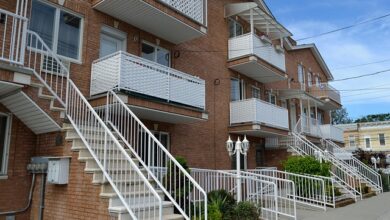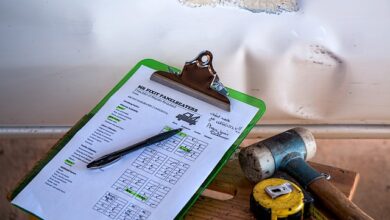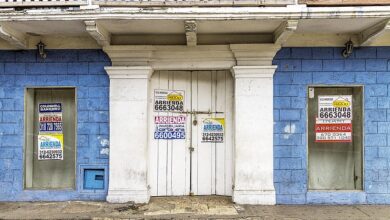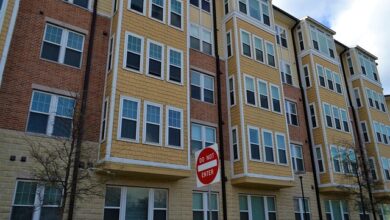How to Calculate the Right Amount of Homeowners Insurance Coverage in Canada

Homeownership is a significant milestone, but it also comes with responsibilities—including protecting your investment with the right homeowners insurance coverage. In Canada, homeowners insurance provides financial protection against risks such as fire, theft, and natural disasters. However, determining the appropriate amount of coverage can be challenging. Over-insuring your home means paying unnecessary premiums, while under-insuring could leave you financially vulnerable in the event of a loss. In this article, we’ll guide you through the process of calculating the right amount of homeowners insurance coverage to ensure your home and belongings are adequately protected.
What Does Homeowners Insurance Cover?
Before diving into how to calculate coverage, it’s important to understand what homeowners insurance typically includes in Canada:
- Dwelling Coverage : This covers the structure of your home, including walls, roof, floors, and built-in appliances like ovens and dishwashers.
- Personal Property Coverage : This protects your belongings, such as furniture, electronics, clothing, and jewelry, from perils like theft or fire.
- Liability Coverage : This protects you from legal and financial responsibility if someone is injured on your property or if you accidentally damage someone else’s property.
- Additional Living Expenses (ALE) : If your home becomes uninhabitable due to a covered peril, ALE helps cover temporary housing and related costs.
- Detached Structures : This covers structures separate from your home, such as garages, sheds, or fences.
Understanding these components will help you assess your needs and determine the appropriate level of coverage.
Step 1: Assess the Replacement Cost of Your Home
The first step in calculating the right amount of homeowners insurance is determining the replacement cost of your home. This is the amount it would take to rebuild your home from scratch using similar materials and craftsmanship, not the market value of your property.
Why Replacement Cost Matters
- Market value includes the land your home sits on, which isn’t insured because it cannot be destroyed.
- Replacement cost focuses solely on rebuilding your home, ensuring you’re not overpaying for unnecessary coverage.
How to Estimate Replacement Cost
- Square Footage Method : Multiply the square footage of your home by the average construction cost per square foot in your area. For example, if your home is 2,000 square feet and the local construction cost is $250 per square foot, the replacement cost would be $500,000.
- Use an Online Calculator : Many insurance companies offer online tools to estimate replacement costs based on your home’s size, age, and features.
- Consult a Professional : For a more accurate assessment, consider hiring a professional appraiser or contractor to evaluate your home’s replacement cost.
Don’t Forget Updates and Upgrades
If you’ve made renovations or upgrades—such as installing a new roof, adding a deck, or upgrading your kitchen—be sure to include these in your replacement cost calculation.
Step 2: Evaluate Your Personal Property Needs
Personal property coverage protects your belongings, but it’s essential to calculate how much coverage you need to replace everything in your home.
Conduct a Home Inventory
Create a detailed inventory of your possessions, including:
- Furniture
- Electronics
- Clothing
- Jewelry
- Appliances
Take photos or videos of each room and keep receipts for high-value items. This inventory will help you estimate the total value of your belongings and identify any gaps in coverage.
Consider Special Limits
Most policies have limits on certain categories of items, such as jewelry, art, or collectibles. If you own high-value items, consider adding a scheduled personal property endorsement to ensure they’re fully covered.
Step 3: Determine Liability Coverage
Liability coverage protects you from lawsuits and claims if someone is injured on your property or if you accidentally cause damage to someone else’s property. While standard policies typically include $1 million in liability coverage, it’s worth considering higher limits, especially if:
- You have significant assets to protect.
- You frequently host guests or events at your home.
- You own pets, particularly breeds that may be considered high-risk.
For additional peace of mind, you can purchase an umbrella policy , which provides extra liability coverage beyond the limits of your homeowners insurance.
Step 4: Factor in Additional Living Expenses (ALE)
If your home becomes uninhabitable due to a covered peril, ALE coverage helps pay for temporary housing, meals, and other living expenses. Ensure your policy provides enough ALE coverage to cover these costs for several months, as rebuilding can take time.
Step 5: Review Policy Limits and Exclusions
Once you’ve calculated your coverage needs, review your policy to ensure it aligns with your requirements. Pay attention to:
- Coverage Caps : Some policies impose limits on specific types of losses, such as water damage or sewer backup.
- Exclusions : Standard policies may not cover certain perils, such as earthquakes or floods. If you live in an area prone to these risks, consider purchasing additional endorsements or standalone policies.
Step 6: Reassess Regularly
Your insurance needs may change over time due to factors such as:
- Home improvements or renovations.
- Acquiring new valuables.
- Changes in local construction costs.
Review your policy annually and update your coverage as needed to ensure it continues to meet your needs.
Common Mistakes to Avoid
- Underestimating Replacement Costs : Don’t base your coverage on your home’s market value or purchase price. Focus on the cost to rebuild.
- Ignoring High-Value Items : Failing to account for expensive belongings can leave you underinsured in the event of a loss.
- Skipping Optional Coverages : Risks like sewer backup or earthquakes may seem unlikely, but they can result in significant financial losses if they occur.
- Not Updating Your Policy : Failing to reassess your coverage after major life changes or home improvements can leave you vulnerable.




